Host (2020)
Directed by: Rob Savage
Written by: Gemma Hurley, Jed Shepherd, Rob Savage
Starring: Caroline Ward, Emma Louise Webb, Haley Bishop, Jemma Moore, Radina Drandova
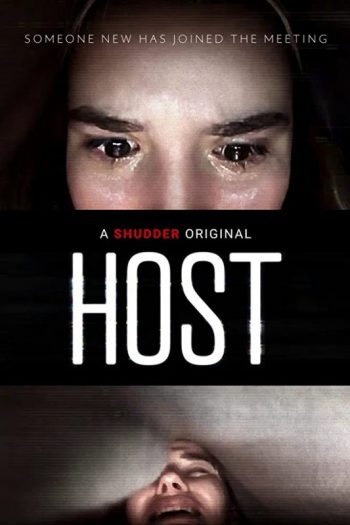
Horror movies have always been topical and used the genre to address real-world anxieties. Still, I can’t think of any that have been this darn topical. Host is a movie made in lockdown for people in lockdown – a brilliant little horror that’s rightfully taking the Internet, and fans everywhere, by storm. And to think four months ago there wasn’t even a script. To celebrate its release HorrorCultFilms did a Zoom call (how appropriate) with director/ co-writer, and friend of the site, Rob Savage to talk about staying indoors, making movies online and fake mediums. It’s an excellent movie with a fascinating production. As always, note the transcript has been edited for clarity. Also, for a question about stunts, I have removed the relevant character’s name and references to their gender to avoid spoiling too much.
First, congratulations. You got people all over the world talking about this film. Aside from it being good, I bet a big part of it is you address the sorts of anxieties people are feeling.
Thanks! We were keen to get this movie out as fast as possible, while we were still in this current reality of being in lockdown and communicating at a distance. We actively tried not to make it a Covid movie – it’s a lockdown one. It’s about feeling together but being isolated. What’s been so amazing is we made this as something fun for the horror community – that’s why we wanted to release it on Shudder. But while it was always these fans I had in my head, it’s transcended that and entered the mainstream. People have been embracing it and seeing themselves in it.
Absolutely. A lot of people don’t appreciate that horror has always reflected real-life concerns. And so many people I know who wouldn’t usually watch horror films have been asking me about this Zoom one. They can’t believe it’s come out so fast. Was it April you began this?
Yeah, that sounds about right. That sounds about right. I know the whole process was like 12 weeks.
It’s impressive: I’ve only seen The Asylum make movies in that timeframe, and there’s a huge gap in quality between yours and theirs. Did you make it because you were struggling with lockdown?
Yeah, like my girlfriend was shooting something in America. So she was, on the other side of the world. And I was alone in my flat, not knowing what to do. I was a couple of weeks away from shooting on a big TV show when we got shut down. So I had all this creative energy I didn’t know what to do with and all of us were bouncing off the walls. But one thing that was keeping me sane was jumping on these Zoom happy hours with my friends, and doing quizzes, Netflix parties – that kind of stuff. And they’re all the people who made Host – they’re the people I was hanging out with. It’s really a film made by a group of friends who would keep each other entertained during this madness.
I take it committing to this project made lockdown easier for everyone involved.
Absolutely. I think the lovely thing about this is me and my friends got to make something that we had a lot of fun doing and other people have responded to. It’s an absolute treat to think that when we look back on lockdown, this is what we’re going to think of. It’s not us sitting around in our pyjamas – although there was a lot of that. We’ve done something with that time that we can all be proud of.
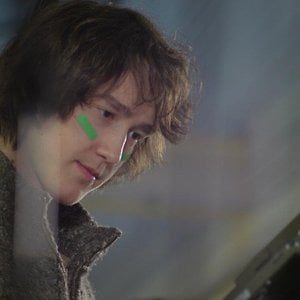
I expect part of this was constraints with the situation. But had you always wanted to do a found footage?
Yeah, I love found footage: I’m not snobbish about it at all. I think if it’s done right, it can be it so inherently scary – when you get that kind of level of realism right. It’s just about finding some way that makes it feel fresh. It’s the same with all of these things, you know, I wanted to make a really good found footage for the longest time, and I also really wanted to make a fun ghost train horror – which is also hard since it’s tough to shake up the haunted house genre. And weirdly, I kind of manage to do both.
And once you had the format, did the concept for it come quite intuitively?
When I had the idea to do a feature, I got in touch with Jed Shepherd, who wrote it with Gemma Hurley and me, to ask what he thought would be achievable. He texted me two words: zoom séance. The simplicity of that struck me as the direction we needed to go. We needed to combine the kind of specificity of our current situation with a classic setup. It’s a kind of classic haunted house movie but done through this very specific modern tool. I always like to be as realistic and grounded as possible in how I present things. On previous projects, I’d gotten to know a lot of mediums. I even joined a spiritualist church for about six months, a few years ago, when I was making a channel four movie about a haunting. From that, I knew the ins and outs of what it’s like to be a modern-day medium. I also knew how it differs from what’s on-screen. So when Jack pitched me that, rather than seeing something that felt like a trope, I saw an opportunity to present a séance in the much more grounded way I’ve experienced them.
You previously mentioned that this was a film made by a group of friends – which is clear. They have the sort of chemistry that can’t easily be faked.
Yeah, I knew it was going to be my friends starring in it because they have that kind of camaraderie and chemistry which was so important. They’d really rise to the challenge too.
Did you encourage a lot of improvisation on set?
A lot – yeah. Me, Gemma and Jed put together a 10-page outline which had all the beats of the scene. So the actors knew the objectives of the scenes, a few key lines and where they needed to get to. But really, it was a process of writing the script on the fly day by day. We’d log in, and they’d have a couple of sentences to work from. I started by letting them do a long improvised version of it and then jump on. I’d hide myself on Zoom then after I’d say “this worked, this didn’t work, more of this, less of this’, and slowly over a few takes we’d whittle this down to what ended up on the screen. Then from that point on that was the scene, and we almost use that as a script. Then we’d do a few more takes as we’d worked it out.
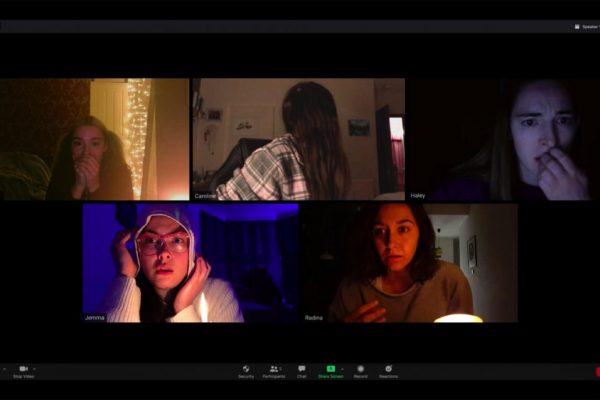
So you would give cast member a lot of say in how their characters developed?
Totally, and they all use their real names. I wanted them all to play quite close to their personalities. Like one thing that I did was keep a lot of stuff that happens in the second half the movie secret from them. So they got scripts that only had what happened to their characters written in them, and everything else was read active. So I filmed a lot of the scares, stunts set-pieces individually with the actors that that were in the scenes. Then when I started shooting group stuff, I was able to feed that into the Zoom call and have them react to it live as though it was actually happening. So a lot of those reactions you’re seeing are genuinely them being terrified. They’re all a bunch of scaredy cats as well.
I saw on Twitter that you didn’t tell them you were using a fake medium too
Yeah – I wanted to freak them out as much as possible by the end. So when we started, I had a serious very conversation with them where I warned them we’re calling out to the spirits. Every day we were putting on a fake séance, but they won’t be able to tell the difference. And so I decided to tell them that I brought in a real medium to play the character so we’d be protected because she could jump in if anything weird happened. At first, at the end of every day, she would come on, shut down the séance, and tell everyone it was okay. Then after Seylan’s internet drops, I stopped bringing her back to shut down the séance. So as far as the cast was concerned, the genie was still out of the bottle. The demon might still be lurking in their houses. So they bought a lot of that real-life territory to it.
That’s like a form of method direction. On that, how do you even begin to direct a movie from your sofa?
I filmed a lot of it myself and sent over little edits that I’d shot in my own home – with me acting out the parts or doing a voiceover. So ‘you’re going to move the camera, very slowly, here. Linger on the door like that’ etc. And then, in the week preceding the shoot, I spent a day with each of the actors – jumping on a Zoom call with them – to block out all the different lighting changes and camera position. It meant they’d always have these creepy frames, with open doorways in the background and that kind of stuff. They knew precisely beat by beat how to operate the camera and where they’re going to be. One nice thing is I was able to be quite instructive with the format – like I could show them how to move the camera because we’re all in the same situation. We ended up finding a groove that worked well, and it was never as much of an issue as I thought it would be.
Does this also make them stunt coordinators as well?
Many of the stunts you’re seeing were performed by stunt doubles- just with clever edits and effects to disguise where the actor ends, and the stunt performer begins. For example, [one character’s] house is made up of five different houses edited together seamlessly. [Their] bedroom is [their] bedroom, then [they] go upstairs and we do a hidden transition to the kitchen. Which is my kitchen, and I’m dressed in [their] clothes, with bunny slippers, throwing the flower around. And when [they] move the camera up to the lights, we had a cut there, and the exploding light was something our pyrotechnics expert shot in his own home. And when [they] get picked up, that’s another double doing that in a house full of stunt performers. When [they] falls out the window, in the blur of the camera we cut to another stunt house with another stunt performer crashing down. So we found all these ways to make the audience think they were watching this all happen to the real cast.
Given the complications, were there many times it just didn’t seem like this could all come together in time?
Weirdly, the shooting was painless. Like it was full-on, and it was weird doing stunts remotely – especially some of the more dangerous ones. They were properly monitored, and we were fully insured, but not being physically present made it a tense position to be in: watching people on the other side of the country do these dangerous things for me. But because we front-ended the shoot with a lot of our stunts, and they looked fucking cool, I was excited about releasing the film. I knew there was stuff people wouldn’t know how we did. But it was really the editing that that took us by surprise: cutting the amount of footage that we shot into something coherent. Brenna Rangott, our amazing editor, did that. It boggles the mind what she did in the time she had with the footage we shot. Because we didn’t just press record on zoom screen – we filmed every single shot individually, and she put them together to make it seem like a seamless real-time experience.
The whole thing is just under an hour – like an actual Zoom call. Is this one of the benefits of approaching a streaming service like Shudder – that it didn’t need to be feature-length?
We had offers from other companies and studios who wanted to release it more conventionally or approach it as a more conventional movie. But I think one of the great things about working with someone like Shudder is the movie can tell you the length it wants to be. Initially, we had a cut of it closer to an hour and a half – but it felt like the natural length of this movie was about the hour mark, and Shudder was totally game for that. It’s was inherent to the concept as well because we wanted it to run like a free zoom call.
When the timer comes in, there’s also a real tension about what will be the last image. Speaking of which, is this it? Or do you have plans for a Host 2?
Everyone’s keen to do more. However, I think the main thing is this movie’s done so well because of the particular conditions under which it was made. All we wanted to do was make a fun scary movie during, during the lockdown, and the kind of mad creative energy everyone bought to it makes Host what it is. We wouldn’t want to try and cynically repeat that, because we’d fall flat. But saying that, we have an idea for a follow-up. It’s maybe not what people would be expecting, but we’re so excited about it. I think it’s going to blow Host out of the water in terms of people’s expectations. Obviously, we’ve set a high bar in terms of the response – but I don’t think people are going to see this next one coming.
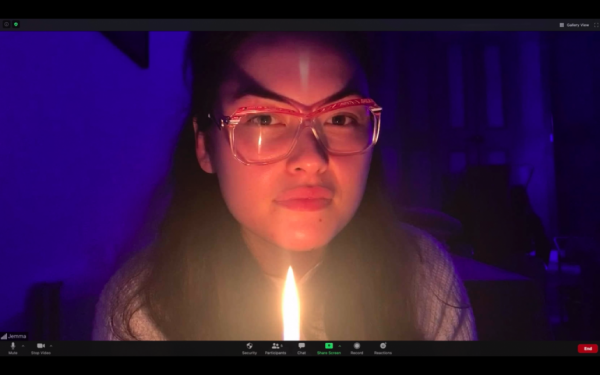
Is this something we might see in another 12 weeks if lockdown goes on?
I want to try and do it as fast as possible. We’re riding high now, and I want to bring the same team back. You can only sit around and enjoy people’s response for so long before you feel the need to start making stuff again, and I think we’ve all got that buzz. Off the back of how well this has been received, I really want to use that and jump straight into something else.
Have you other plans too? Last time we spoke, you were coming off the back of Dawn of the Deaf – I remember you saying you were interested in a feature-length version.
Yeah – we’ve got it coming. We’ve got a full Salt movie coming too, and we’ve also got a movie that Sam Raimi’s producing which we’re really excited about. Hopefully, if the world returns to normal anytime soon, one of those three will be the next conventional project I shoot. Touch wood.
Finally, while it’s been good for you, do you have any thoughts on how the film industry is going to be shaped by lockdown?
I don’t know – it’s a situation that’s still unfolding, and I’m still honestly getting my head around it and what returning to a conventional film set is going to look like. But I would say I think that horror, and particularly indie horror, is going to have a real upswing with smaller, more claustrophobic movies being made. Because it just so happens that a lot of the best horror movies are small and contained, with very few characters in a few locations. Those are all going to be requirements for movies shooting during Covid. And I think, within those parameters, it’s going to be indie filmmakers who rise to the challenge and find creative ways through them. I’m excited to see what people have been cooking up during their lockdown, and I think we’re going to get some amazing horror movies.
Host is available on Shudder. You can read our review here. Rob and the cast will be doing a Twitter watch along party on Friday 7th August at 11:30pm (BST). They will be live-tweeting as they watch, sharing behind-the-scenes footage and stories from filming. You can follow and join the conversation using#HappySpookies.

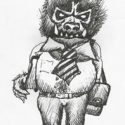
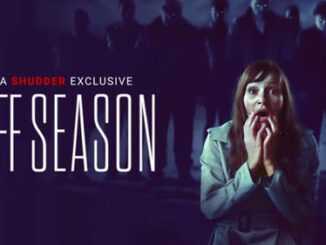

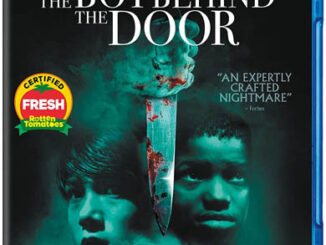
Be the first to comment